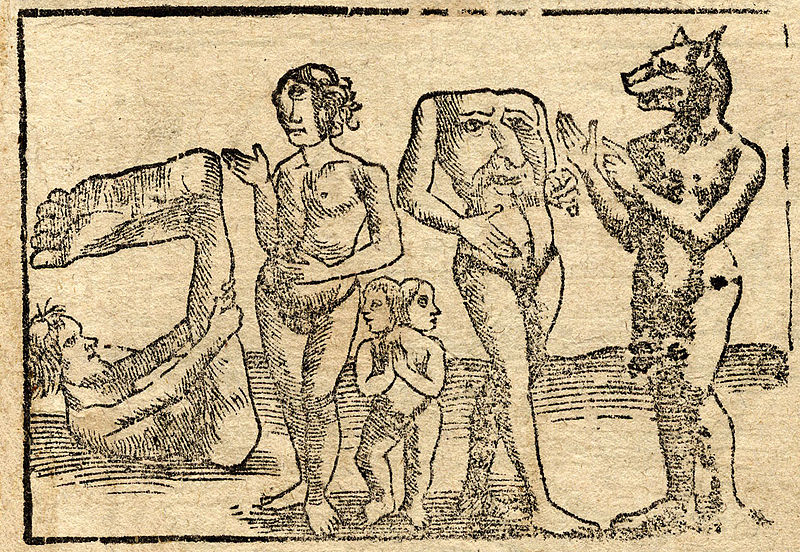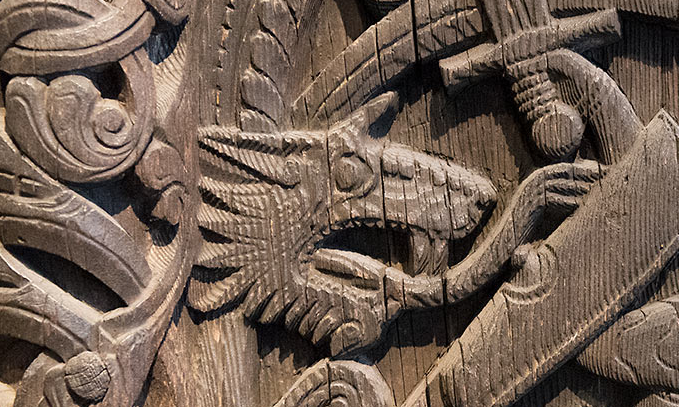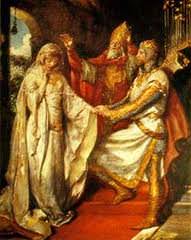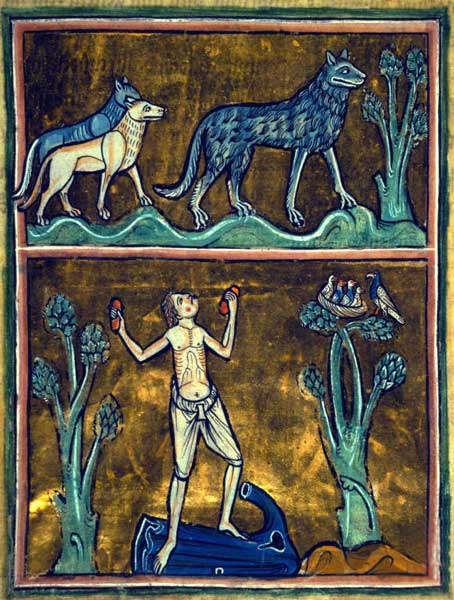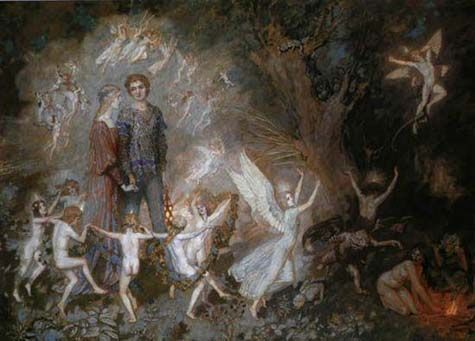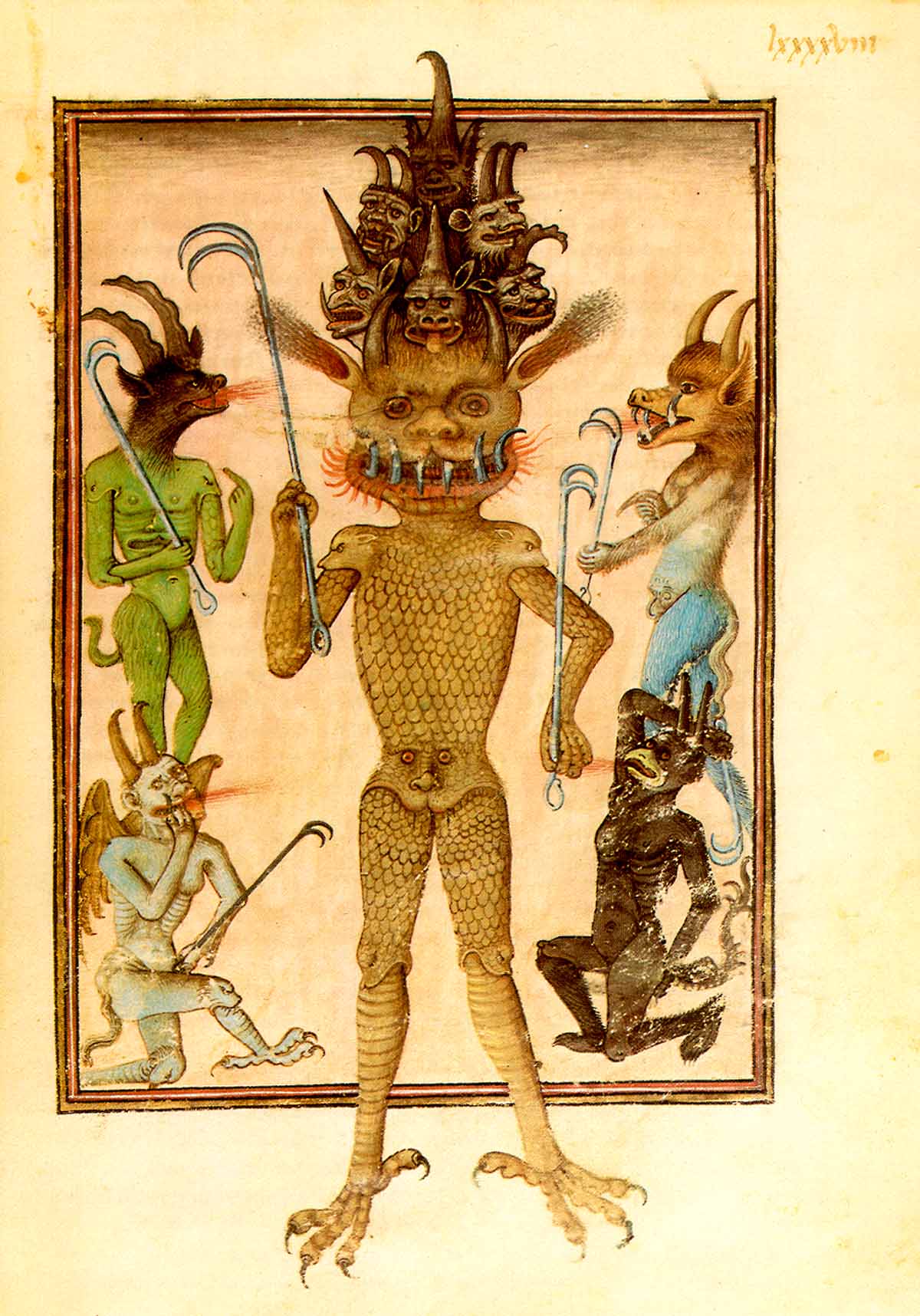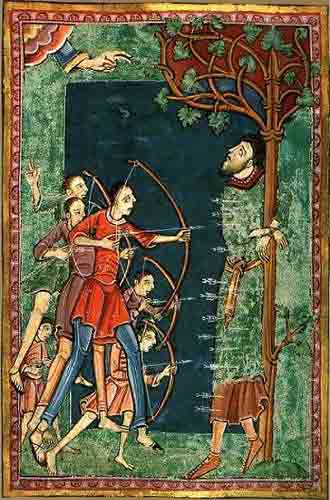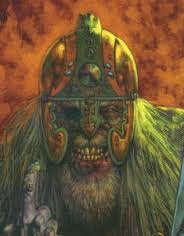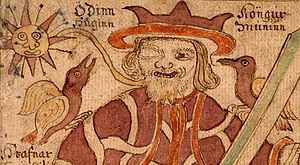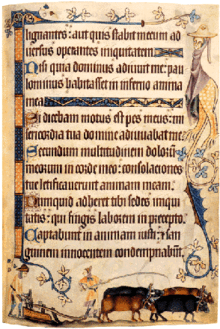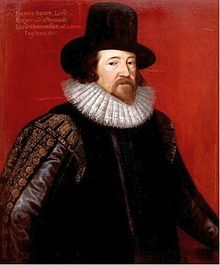The role of mythical and imaginary figures in the mental framework of medieval society
It is crucial to evaluate also whether or not medieval people distinguished the fiction from reality, and if they did, does this have an impact on the roles which certain figures performed?
What did Dragons look like for the Vikings?
While the modern image of the dragons often depicts a beast that has four legs, leathery wings and breathes fire, the medieval image of the creature could be very different. In the article, ‘Dragons in the Eddas and in Early Nordic Art,’ Paul Ackey shows that the Vikings and Norse society had their own ideas of what dragons looked like.
Chaucer’s Arthuriana
The majority of medieval scholars, including Roger Sherman Loomis, argue that the popularity of the Arthurian legend in England was therefore on the wane in the latter half of the fourteenth century; as a result, the major writers of the period, such as John Gower and Geoffrey Chaucer, refrained from penning anything beyond the occasional reference to King Arthur and his court.
Saga Motifs on Gotland Picture Stones: The Case of Hildr Högnadóttir
This article will only examine one of these legends, namely the ‘Hildr legend’ in the context of two of these stones, lärbro stora hammars and stenkyrka smiss . An attempt will be made to place the images in a larger context than has been done before, and by doing so to strenghten the probability that they were indeed intended to refer to the original Hildr legend.
The Position of the Individual Gods and Goddesses in Various Types of Sources – With Special Reference to the Female Divinities
Old Norse religion is in itself an interdisciplinary subject. If we are to survey the whole subject, it will presuppose special knowledge of a great many fields.
Myths and mandrakes
Others, however, began to wonder whether the possession of roots might not bring them success in other areas as well—wealth, popularity, or the power to control their own and other people’s destinies, and took to wearing them as good luck charms.
The historical basis of Lycanthropism or: where do Werewolves come from?
Werewolves, Lycanthropes or Man-Wolves appear in many German, French and Scandinavian stories. Nowadays there exists an image of these creatures, which combines almost all the aspects of the werewolf-myths around the world, that was brought to us by Hollywood.
Faerie Folklore in Medieval Tales: An Introduction
Defining the term ‘faerie’ is not easy; some definitions include only specific, pre-Christian types of mythological creatures while other definitions include all of the spirits, angels and supernatural animals as well as the souls of the dead. I will take a middle road and include the spirits and the souls of the dead, since the dead and the faeries have an intimate connection in the folklore of the British Isles.
The Epistemological Function of Monsters in the Middle Ages
In this paper I will first outline the history of teratology (the study of monsters) from antiquity to the late Middle Ages in order to lay the foundation and to help the reader grasp the larger cultural-historical context.
Marriage between King Harald Fairhair and Snæfriðr, and their Offspring: Mythological Foundation of the Norwegian Medieval Dynasty?
Historians in Nordic countries since the turn of the twentieth century have become increasingly aware of the problem using these primary sources from earlier times, especially the sagas from the late twelfth- and thirteenth centuries, about three hundred years after Harald assumedly lived. It was Halvdan Koht(1873-1965)who introduced this point of view into Norwegian historiography, although some researchers, including Yngvar Nielsen, had cast doubt on the accuracy of the account before him.
The Cross as Tree: The Wood-of-the-Cross Legends in Middle English and Latin Texts in Medieval England
The wood-of-the-cross legend is actually a group of narratives that trace the pre- history of the wood used to make Christ’s cross back to Old Testament figures, or in some cases back to paradise itself.
St Edmund of East Anglia and his miracles: variations in literature and art
Edmund was said to have been crowned at the age of just fourteen years by St Humbert on 25 December 855 in the then royal capital Burna, (probably Bures St Mary, Suffolk). Almost nothing is known of his life and reign, though he was recorded as a just and uncompromising ruler, the embodiment of the Greek ideal of the kalòs kai agathòs – that is, the right balance of the Good and the Beautiful, the combination of virtues that could create the perfect nobleman.
Drauginir: Revenants in Old Icelandic Sagas
It is this humanity in a monster that helps to show why these draugar fascinate us so much. The “others” that exist outside the boundaries of society: the weird old ladies that people label as evil witches, the misshapen, the “freaks” that Tod Browning made famous are funhouse mirror images of ourselves.
Tolkien’s Cauldron: Northern Literature and The Lord of the Rings
Tolkien was a scholar of Old Norse literature and much of his work in the Lord of the Rings is informed by his knowledge of old Norse mythology, Eddic poetry, and saga. Tolkien’s use of these sources enriched this complex story of Middle-earth.
INTERVIEW: Song of the Vikings: Snorri and the Making of Norse Myths
An interview with author Nancy Brown on her latest medieval offering: “Song of the Vikings: Snorri and the Making of Norse Myths”.
Language and Legend in the Fantasy Fiction of J.R.R. Tolkien
There was something so real in the languages that he created, and critics wanted to find the inspirations behind Tolkien‘s worlds. Elves, dwarves, men, hobbits, and various other creatures occupied the pages of his books, but the languages he created were complex and had real elements in them. Examples of his invented languages were those spoken by the Elves, Sindarin and Quenya.
“Far-off gleams of evangelium” : a study of how J. R. R. Tolkien’s The lord of the rings reflects the biblical “Kingdom of Heaven”
The findings of this thesis confirm that the values of LOTR and the Kingdom are notably similar, and that the reader of LOTR does indeed derive from it an experience of what the Kingdom ideally is. But all this is “under the surface”, and Tolkien did not impose his Christianity.
Where does Old Norse religion end?
How did the believers of the Old Norse religion perceive other religions, and to what extent did people from the outside get in contact with myths and rituals?
Medieval Halloween! Great books for Ghosts, Goblins, Witches & Ghouls!
Some spooktacular reads to celebrate Medieval Halloween!
The Language of Birds in Old Norse Tradition
Special individuals capable of understanding the language of birds are spread throughout the medieval Icelandic literary corpus. This phenomenon has received surprisingly little academic attention and is deserving of detailed, extensive, and interdisciplinary study. Capable of flight and song, birds universally hold a special place in human experience. Their effective communication to people in Old Norse lore offers another example of their unique role in humanity’s socio-cosmic reality.
When a Knight meets a Dragon Maiden: Human Identity and the Monstrous Animal Other
The amount of research into the field of medieval monsters has been growing within the past few decades, but the monster has not always been accepted as a worthwhile topic of serious study
Lofty Depths and Tragic Brilliance: The Interweaving of Celtic and Anglo-Saxon Mythology and Literature in the Arthurian Legends
Arthur and his knights are set apart from other literary heroes because of their unique construct, a blending of two cultures into one legend.
The Virtuous Pagan in Middle English Literature
From the first through the fourteenth centuries, a succession of solutions to the problem of these virtuous pagans evolved. For the Early Church, an attractive solution was that Christ descended into Hell to convert the souls he found there.
Sources of Medieval Demonology
Greek philosophy, Jewish apocryphal literature, Biblical doctrine, and pagan Germanic folklore all contribute elements to the demons which flourished in men’s minds at the close of the medieval period.
Francis Bacon’s use of ancient myths in Novum Organum
In this paper, I will show how the ancient myths of Pan, Perseus, Dionysius, and Prometheus have an impact on Book I of Francis Bacon’s Novum Organum.
